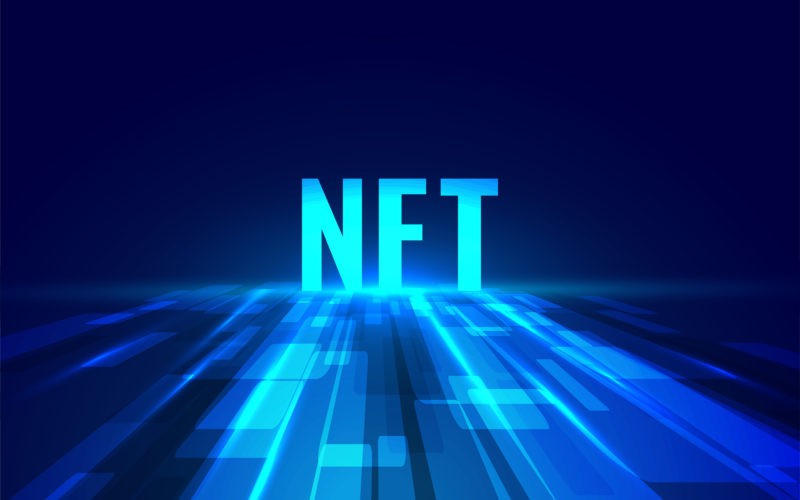In the past two years, NFTs, or non-fungible tokens, have grown in popularity. This is because they provided many people all over the world with fresh business chances. Additionally, companies began considering bringing their ideas into this dynamic environment, and for the majority of them, the NFT marketplace emerged as the best choice.
According to estimates, the size of the global NFT market would increase from USD 3.0 billion in 2022 to USD 13.6 billion by the end of 2027, at a Compound Annual Growth Rate (CAGR) of 35.0%. The largest NFT market for many token types is currently OpenSea. Nifty Gateway, Solanart, and SuperRare are more well-known companies that focus on NFT artwork.
The numbers are increasing as well because the NFT sector is expanding daily and more people want to work in this field. NFT marketplace creation, however, is a difficult process that calls for expertise, experience, and a thorough comprehension of the niche. Due to their lack of readiness when the development process began, many recent markets failed.
Our tech experts helped us create this guide by outlining the most frequent problems businesses run into while creating an NFT marketplace. Anyone thinking about developing will benefit from reading this guide because you’ll be aware of the NFT issue in 2022 and prepared to address it to ensure a smooth launch.
Principal Issues with NFT Marketplaces
— High and Unexpected Fees
NFT trades are invariably accompanied by exorbitant and undeclared gas fees. And the majority of newbies are unaware of them. The majority of NFTs available today are built on the Ethereum blockchain and the ERC-20, ERC-721, and ERC-1155 token standards, which are used to create smart contracts. To identify its value, the Ethereum blockchain specifically uses the proof of work technique. One of the major problems with the development of the NFT marketplace today is the high gas fees that arise from this.
— Inadequate user experience
Because the market is still developing, NFT customers frequently need to look for different crypto platforms and launchpads and endure protracted sign-up and verification procedures. In order to create a user account, some platforms additionally need users to submit personal information such as their government IDs (KYC), phone number, and even address.
And although it will be fine in terms of data security, the majority of NFT marketplaces do not offer training to new customers. Users frequently experience difficulty with account creation, verification, and other processes as a result. People are forced to hunt for better solutions because of the bad user experience this results in.
— Unsatisfactory Copyright Protection
For every artist who wants to produce digital art, totally own it, and profit from it, NFTs are fantastic. The problem stems from the ease with which photos and other tokens can be copied and disseminated online without the producers’ permission. Additionally, there is no legal framework or precedent in the NFT marketplace sector to confirm or support the actual ownership of an NFT painting or the following copyright proof.
— Lack of Expression and Creativity for Creators
NFT marketplaces were created to give artists a platform to sell their creations online and express themselves creatively. However, the majority of them add a lot of moderation and censoring elements that restrict the creativity and independence of artists. Even if this might be OK for some tokens, it might disrupt the entire process for the majority of artists that wish to use your NFT marketplace.
— Absence of UI/UX considerations
User Interface, also known as UI, is what controls how customers interact with your marketplace. Making User Experience (UX) better and more intuitive is the goal that is followed by high-quality, straightforward, and intelligible UI. This results in the user exerting the least amount of effort to get the desired result.
UX and UI are crucial to the success of your platform because the majority of NFT marketplaces place a higher value on verification, rapid development, and protection (in their perspective). A dull, outmoded UI that doesn’t stand out and makes it difficult for the artist to create tokens won’t be used by any artist.
Fortunately, this problem is readily resolved by working with a qualified group of designers who have the necessary expertise. They will make sure that every component is clear and easy so that the user’s objective may be easily accomplished.
— Mediocre customer service
As we just mentioned, the NFT business is still in its infancy and needs time for consumers to become more aware of its possibilities and applications. Some business owners, however, mistakenly believe they are experts in this sector and fail to recognise the value of assisting their customers. Actually, since you are the only one who is familiar with how your platform functions, you can never be sure what flaws or problems users may encounter when using it.
Because of this, it’s crucial to offer customer care that is available around-the-clock, ready to take any input and give each customer the solutions they need. Make sure your team won’t respond with basic templates and will instead offer genuine assistance to people who require it at any given time.
— Limited Methods of Payment
Modern NFT markets lack a wide variety of payment options. They still do not let customers pay with bitcoin, despite the fact that they can accept payments from a variety of sources, including credit cards, debit cards, online banking, and several wallets. However, analysts predict that this problem might be fixed soon because the market is changing and consumers are becoming more demanding about these platforms.
— Industry confusion
Yes, NFT is a trendy term. However, this does not imply that everyone is aware of what it is and how it generates income. This is because there isn’t much information available regarding NFT that isn’t technical, which makes it look incredibly complex to most people. Additionally, the majority of intriguing markets attempt to integrate everything in one location, which makes it confusing for beginners and disorganised. Because of this, it could be challenging for users to switch between categories, make their selections, generate tokens, and handle their payments.
— Cyberthreats and the Risks of Online Fraud
The likelihood of cyber threats to token holders has also considerably increased because to NFT’s enormous popularity. Numerous hackers create fresh methods to steal money from user accounts or, in some cases, even tokens. Even though the NFT marketplace uses three or four layers of verification to safeguard itself, hackers can still access the platform because of recent technological advancements and subpar software solutions.
Large, established marketplaces also experience this. Additionally, there is a significant chance that someone may pass themselves off as an NFT creator and sell phoney artwork. This is due to the prevalence of phoney NFT drops, airdrops, giveaways, and imitations of well-known NFTs.
— Evaluation Obstacles
Users and developers frequently encounter this issue in the NFT marketplace. Modern artists struggle to set the proper price for their work because it all depends on a wide range of variables, including the instruments employed, creativity, audience participation, the context of the collection, and more.
Setting the fixed pricing for a certain type of NFT is difficult because the NFT market is still developing. Because of this, users frequently are unsure about how to evaluate their own work and what standards to utilise. Due to the fact that price swings remain consistent, it is more difficult to evaluate tokens.
— Legal Obstacles
The government does not have authority over the NFT market. To categorise NFTs legally for the purposes of establishing rules that may soon be implemented, nations including the UK, Japan, and the EU are going forward with their respective strategies.
This is mostly due to the market’s phenomenal growth rate, which will soon force it to rank among the largest global industries. Therefore, the need for a regulatory agency will likely arise quickly. Additionally, NFTs are now utilised in a variety of contexts, so the regulatory body will need to adjust to the laws and policies of a dynamic industry that is always evolving.
The Last Wise Words
The NFT market has expanded significantly. Because of this, the majority of businesses began to think about the best way to access this market: NFT Marketplace Development. But not everyone is aware of the potential difficulties in designing this platform.
⸻
Suzanne Dieze is a technical content writer and preferably writing technology-based blogs and articles. I have a few published pieces under Mobile Based Applications, and Data science consists of proven techniques, future costs, and benefits.












